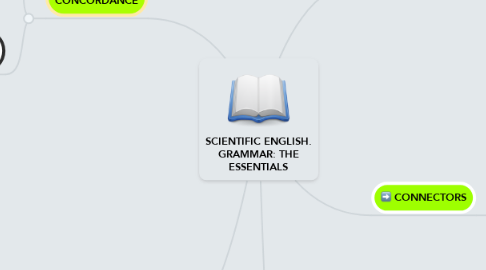
1. TENSES AND CONCORDANCE
1.1. General tips on tense usage
1.1.1. PAST TENSES: used in Methodology and Results sections
1.1.2. PRESENT TENSES: accepted facts, general findings...
1.1.3. FUTURE TENSES
1.2. Concordance
1.2.1. Subject and verb need to agree in number
1.2.1.1. Singular subject: singular verb
1.2.1.2. Plural subject: plural verb
1.2.1.3. For terms that can be either singular or plural
1.2.1.3.1. Singular verb: if the term refers to a unit, amount, discipline, or organization.
1.2.1.3.2. Plural verb: if the term indicates individual members or components rather than the collection as a whole
2. THE ARTICLE AND NOUM
2.1. COUNTABLE NOUNS
2.1.1. THE
2.1.1.1. Definite singular, Definite plural
2.1.2. A, AN
2.1.2.1. Indefinite singular
2.1.3. Ø
2.1.3.1. Indefinite plural
2.2. UNCOUNTABLE NOUNS
2.2.1. THE
2.2.1.1. Definite
2.2.2. Ø
2.2.2.1. Indefinite
2.3. EXCEPTIONS
2.3.1. No article before proper nouns
2.3.2. Lakes do not take articles
2.3.3. Most countries do not take articles
2.3.4. Rivers, mountain ranges, seas, and oceans should be preceded by the article "the"
3. ENGLISH VOICE
3.1. ACTIVE
3.1.1. Subject is the actor
3.2. PASSIVE
3.2.1. Subject is acted upon
3.2.2. Form
3.2.2.1. BE + PAST PARTICIPLE
3.2.3. Uses
3.2.3.1. It lets the facts stand on their own
3.2.3.2. Removes some accusations of bias (who did it, how many did it).
3.2.3.3. Presents an ‘air’ (or feeling) of logic
4. CONNECTORS
4.1. Uses: Link ideas and information
4.2. Linking words
4.2.1. also, in other words, in addition, for example, moreover, more importantly
4.2.1.1. To signal a reinforcement of ideas
4.2.2. but, on the other hand, however, instead, yet, in contrast, although, nevertheless, in spite of
4.2.2.1. To signal a change in ideas
4.2.3. thus, therefore, accordingly, in conclusion, finally, so
4.2.3.1. To signal a conclusion

